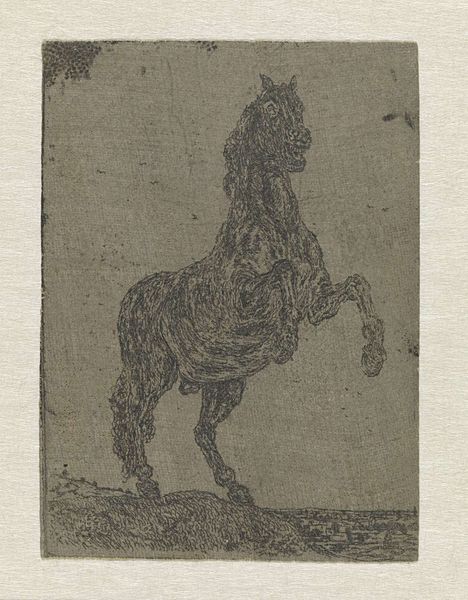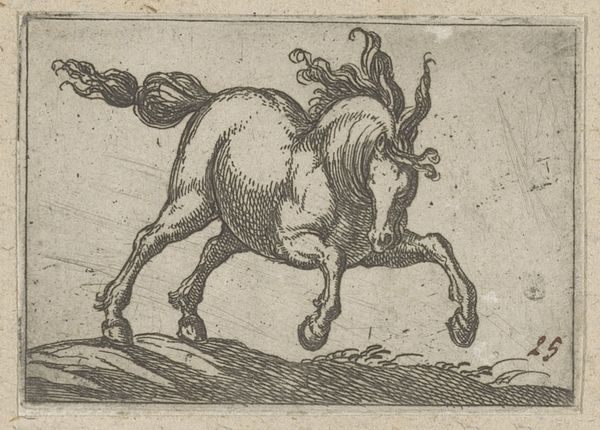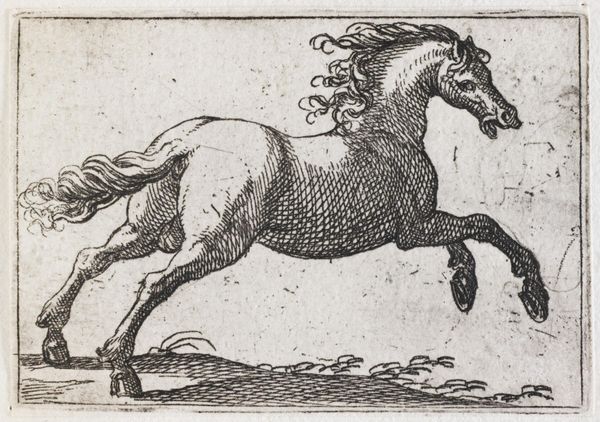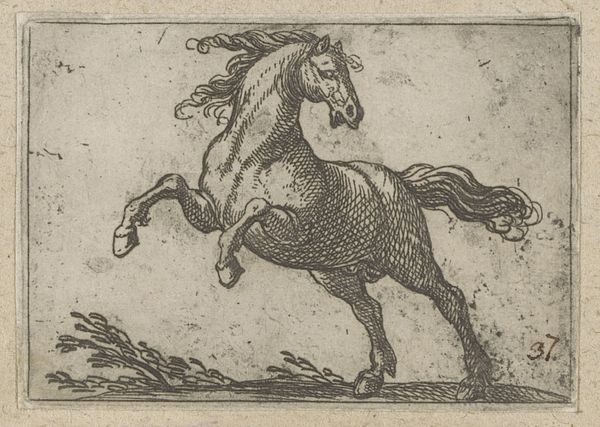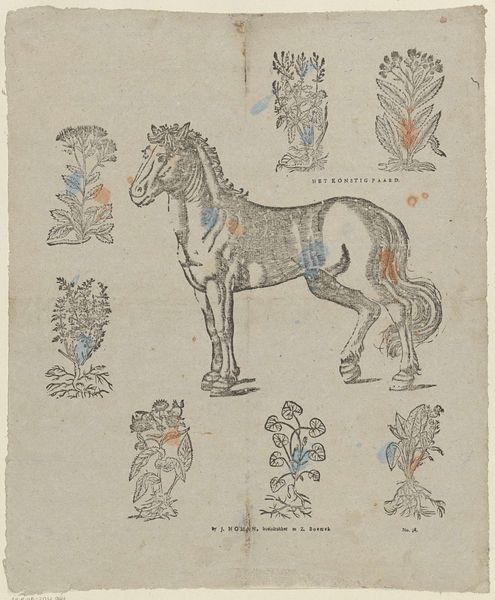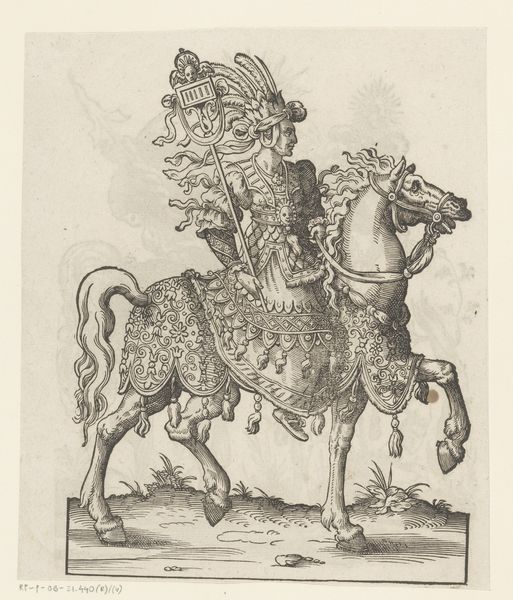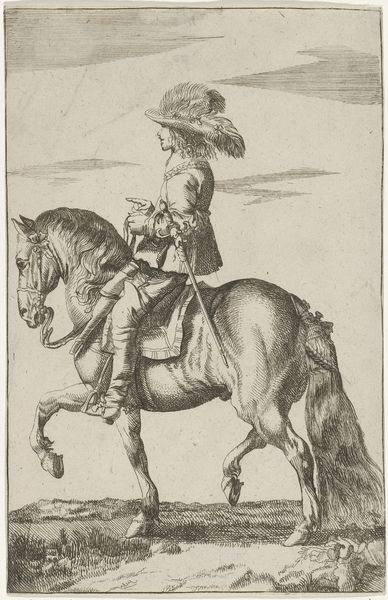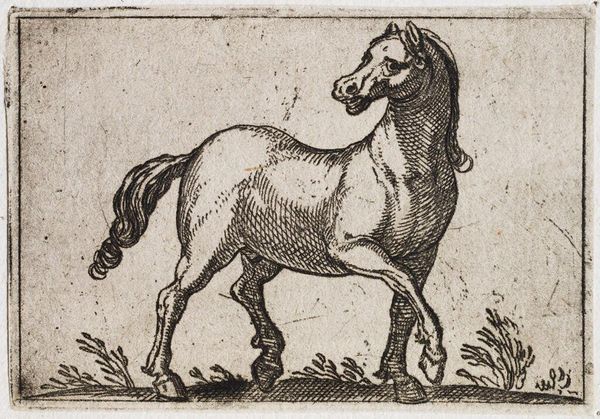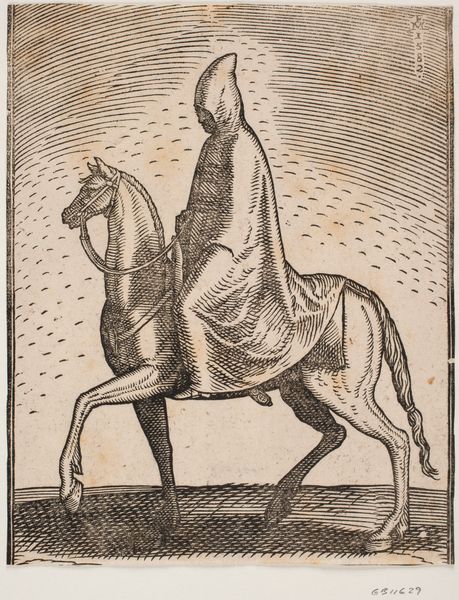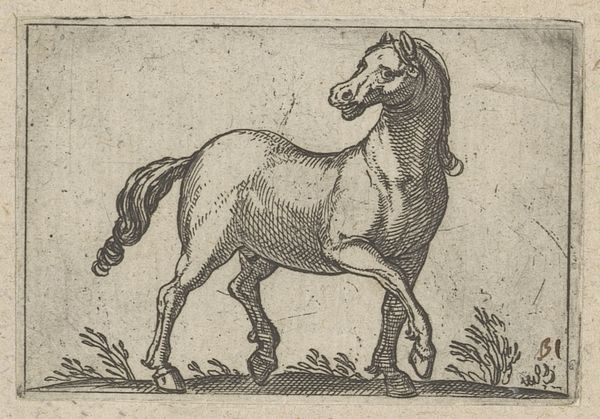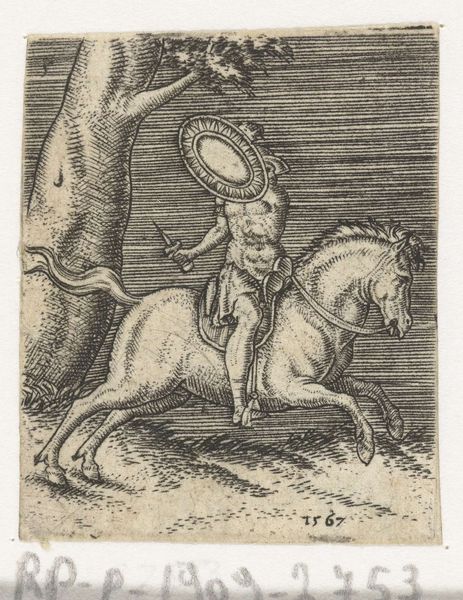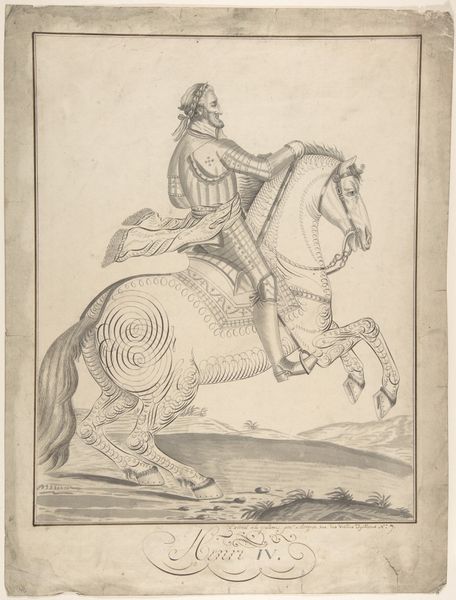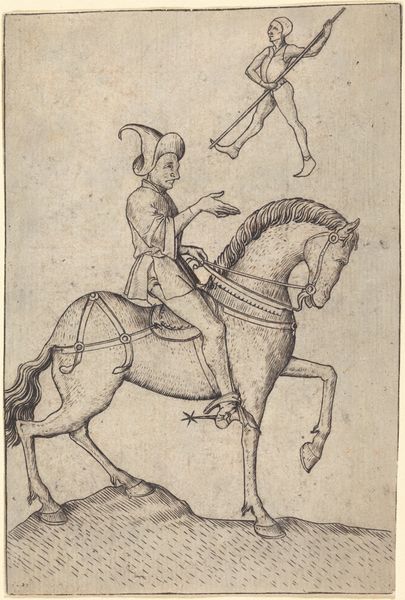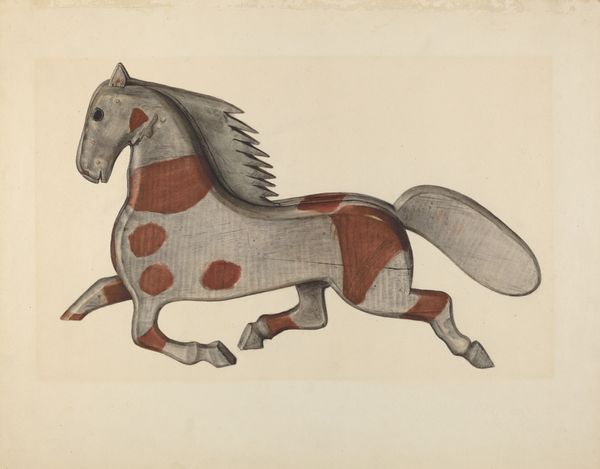
Dimensions: plate: 15.9 x 11.6 cm (6 1/4 x 4 9/16 in.) sheet: 31.6 x 20 cm (12 7/16 x 7 7/8 in.)
Copyright: National Gallery of Art: CC0 1.0
Curator: Roger Vieillard's 1944 engraving, "Le cheval de la nuit," translated to "The Horse of the Night," is what we're looking at today. Vieillard worked primarily in printmaking and drawing; this piece beautifully demonstrates his command over line and symbolic imagery. Editor: My initial feeling is a blend of unease and wonder. The horse itself is… unusual, almost as if cobbled together from different dreams, under a somewhat menacing starry sky. Curator: It's worth noting the historical context. This work was produced during World War II. Given that Vieillard was also interested in history painting, could this work be interpreted through the lens of the war? Editor: It does feel apocalyptic, doesn’t it? The fallen figure on the ground definitely contributes to that. It's like a nightmare version of a heroic war scene. I find myself drawn to the constellations marked out on the horse. They give this mythical beast a layer of …science almost? A surreal mingling. Curator: The constellations are fascinating. The graphic representation is somewhat unsettling, even though they add a structural aspect to an ethereal composition. The lines are remarkably precise for the medium. There's a tension between control and chaos throughout this print. Consider how the symbolic associations with horses – power, freedom, nobility – are twisted here. Editor: Twisted is a good word. Its power feels almost dangerous. Do you think there is a suggestion here, given the title and that war-time context, that even supposed heroism can morph into something frightening, something dark? That constellations charted across its body could become scars? Curator: That's a very astute observation. The formal qualities of the engraving coupled with the symbolic language certainly points to that kind of interpretation. It compels one to question narratives. Editor: Ultimately, this piece lingers in the mind because it’s not just a beautiful rendering, it’s a visceral emotional response distilled into stark monochrome. And even though I'm still slightly unnerved, I feel more thoughtful somehow, more engaged with it than when I started. Curator: Indeed, “Le cheval de la nuit” exemplifies how artwork, no matter how small in scale, can serve as a poignant reflection on critical junctures in history and resonate on such profoundly personal level.
Comments
No comments
Be the first to comment and join the conversation on the ultimate creative platform.
